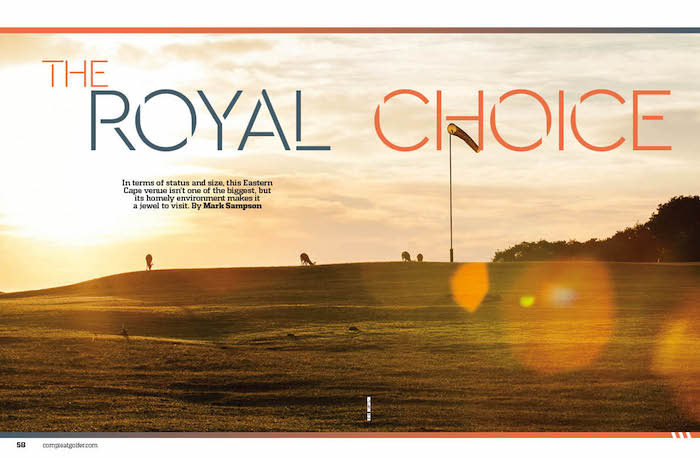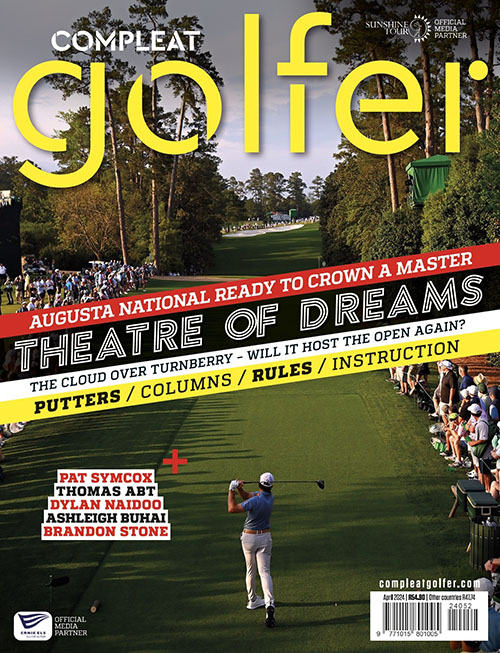In terms of status and size, this Royal Port Alfred isn’t one of the biggest, but its homely environment makes it a jewel to visit, writes MARK SAMPSON in Compleat Golfer.
Driving up the steep driveway of Royal Port Alfred Golf Club inspires a feeling of intrigue and excitement. The course has over a century of history and that may be part of why its hallowed fairways are always a treat to return to.
But that’s not the only reason this course in the Eastern Cape is a favourite of locals and visitors alike. The friendly demeanour of the staff and big smiles, as wide as the fairways, are part of the experience as you make your way from the pro shop to the 1st tee.
History is very much part of the course, featuring well-known visitors, famous members and the competitions it has hosted.
Royal Port Alfred originated through the collusion of two hotel owners, two doctors and an investor, who each contributed £20 in 1907 to start the project. A year later others were invited to invest in the building of the course and clubhouse. The only golfer in the group of five, a Dr Atherstone, immediately started working on the layout of the first nine holes.
To save money, the course followed the natural, undulating lie of the land and in April 1908 the course, boasting a full 18 holes, opened. It held a three-day tournament with prize money of £30. In 1915 the clubhouse was completed and although it has undergone major revamps, it still stands on the same position overlooking the course and ocean in the distance.
Over the past 110 years numerous changes have been made to the course, some more dramatic than others. For example, at one point in 1915 it played as a par 76 with eight par fives. Other nip and tucks have also been recorded.
Being a coastal course, the wind is always going to be a factor. It’s no secret the early start times are booked out well in advance by locals in the know, as that is the only time of the day when the wind is down. Although not long at 5 739m, when the wind is up the bush defining
the fairways becomes that much tighter. The shortest par three measures only 126m and a number of par fours are under 300m, well within reach for the longer hitters.
The layout’s uneven lies and constant changes in elevation turn what appears to be a rather benign course into a challenge. Unlike traditional links courses, it doesn’t have an outward nine in one direction and another returning to the clubhouse. The holes continually change direction, never allowing one to become accustomed to the influence of the wind.
The round starts with five par fours in a row, three of which are under 300m. The first one of length is the 2nd, named ‘Hippo’s Bath’, at 315. Numerous stories abound regarding the name, from once housing hippos to a hippo tooth being found in the large bowl-like depression short of the hole.
The first true tester comes at the 5th, which is a par four of 417m.
A guaranteed crosswind and a huge drop in elevation will quickly test your ability to play in the wind off an uneven lie. The approach for most golfers is a long-iron to a small green. The shortest par three of the course is up next, followed by a par five. The 8th is a par three playing from an elevated tee down to a green seemingly surrounded by coastal bush. Like a number of other holes, the tee box is protected from the wind, but don’t let that fool you, and keep an eye out for the windsock on the distant hill to indicate wind direction.
The stroke-three 10th is another notable hole, aptly named ‘Whale Back’ as the fairway rises and then slopes down to the green in a shape similar to that of a whale. When the wind is from behind, the hole can play short; if you are playing into the wind, the exposed fairway presents difficult conditions and the stroke-three rating becomes more obvious.
The 12th is known specifically for the view from the back markers and Prince Edward’s antics on a visit in 1925. He was so impressed with the view that he attempted to drive a ball directly into the sea. He failed, but the ball was recovered and today sits in the clubhouse. See the pro tip on page 65 for how best to play this beauty.
The stroke-one 16th is another hole with a massive drop. It slides down from right to left and depending on the wind direction, it can be rather gentle. But if the wind is up, the green, 410m from the tee, can be a battle to reach in two. The uniqueness of each hole is a true feature of this layout and although it may not seem overly manicured, this lends itself to the links-like nature of the course.
The Port Alfred course’s connection with the Royal family began in April 1921 with a visit from Prince Arthur of Connaught. So impressed was
he that he persuaded King George V to bestow the ‘Royal’ title on the club in 1926. Subsequent to his visit and the elevated status in the golfing fraternity the course hosted the 1922 SA Golf Championship.
Another massive bonus of playing Royal Port Alfred is the wildlife you encounter. The abundance of game is an experience, with unique sightings around every corner. From tortoises to the elusive blue duiker, as well as impala, springbok, bushbuck and blesbok, great sightings can be expected. The thick bush and water hazards are also home to a variety of birdlife.
The course comes with the small-town charm that is found throughout Port Alfred and the province. It isn’t a huge club but has a homely feel. As with most clubs, the bar is the hub of the social life and its elevated position makes it a great place to enjoy a lager and the views. It may not have hosted many major tournaments but the annual Kelly Foursomes is legendary in the Eastern Cape and further afield. Teams of four from clubs across the province gather for a matchplay competition. If visiting the club, befriend a local to hear all the stories and urban legends that abound from this tournament.
The course’s popularity through the years speaks for itself and with 16 782 rounds of golf recorded in 1919, it is still as popular as ever.
CONTACT DETAILS
Clubhouse: (046) 624 4796; [email protected]
WEBSITE
rpagc.co.za
– This article first appeared in the February issue of Compleat Golfer







